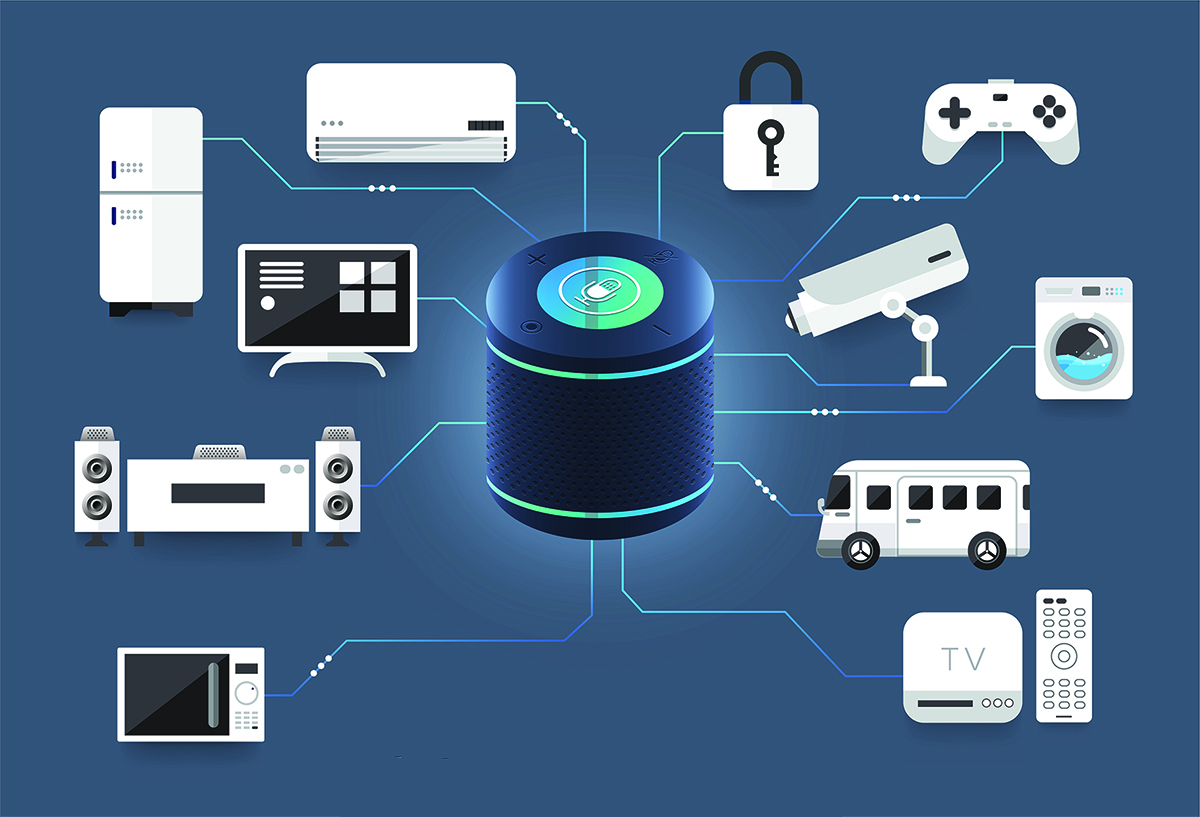Voice command is quickly becoming a staple feature in electronic products. Whether it’s your smartphone, remote control, or your smart home assistant, voice recognition can make your voice as productive as your hands.

Voice-activated technology has followed the smart speaker into our homes, accelerating the pace of Internet of Things (IoT) adoption around us. As IoT voice control technology continues to make its way into the home environment, more potential applications are becoming possible.
Today, we’ll look at the rising market for speech and voice recognition, discuss how manufacturers and product makers can meet the demand for voice-enabled devices with IoT functionality, and examine how voice recognition applications can positively impact human lives.
The Rising Demand for Voice Command
Voice-enabled devices are quickly becoming the items that people can’t live without, and the demand for them isn’t going away anytime soon. In fact, the speech and voice recognition market is projected to be worth $27.16 billion by 2025.
The pandemic has spurred on the adoption of voice assistants, as businesses and consumers alike look for easier, safer, and more convenient ways to interact with the world. Even when life eventually returns to the new normal, most people will keep using voice assistants and their voice-enabled devices.
Manufacturers and product designers face challenges finding the ideal hardware and software solutions that can match the desired time to market. However, with Ambiq’s latest ultra-low powered solution, you can quickly bring to market billions of future IoT devices with voice functionality.
How Manufacturers Can Meet Market Demands
With the demand for voice-enabled products predictably rising, more brands are looking to add voice functionality to devices such as smartwatches and TV remotes. Until recently, the compact size and the power constraints presented real design challenges. However, with the introduction of the new Ambiq Voice-on-SPOT® (VoS) Kit, manufacturers can integrate voice-command into their IoT devices with faster time-to-market. The first Ambiq VoS Kit is built on the Apollo3 Blue Plus MCU, enabling Always-on-Voice (AoV) functionality in battery-powered devices.

The Apollo3 Blue Plus Voice-on-SPOT Kit facilitates demos, evaluations, and the development of ultra-low power audio and voice capabilities on the Ambiq SoC. These tools enable manufacturers and product developers to add a reliable voice UI (user interface) in a compact, battery-powered device. In addition, the Ambiq VoS Kit has a robust functionality, as it provides always-on voice capability with options for one or two microphones, signal processing, wake word/command detection, codec, and Bluetooth Low Energy communication.
Furthermore, the Ambiq VoS Kit delivers a complete ultra-low power solution at the MCU and system levels with its ultra-low power consumption. Depending on the application requirements and customer aspirations, the Kit can extend the battery life up to a year or more, on standard alkaline or lithium batteries. Compared to a standard Arm® Cortex®-M4 core, Ambiq’s patented SPOT® technology provides up to 10x lower active power consumption.
Enhancing Human Lives with Voice Recognition
There are many voice-recognition applications available for consumers, especially when it comes to personal use. Smartphones have been advertising voice recognition and voice assistant features for years. More recently, smart sensors, smartwatches, and health trackers have emerged as popular wearable technologies that can better incorporate voice command. Increasingly, device sensors can precisely detect the user’s voice, with some able to recognize voice through skin vibrations in the neck area.

In a smart home, voice recognition is already a familiar feature of voice-enabled devices, voice-activated , and voice-enabled virtual assistant systems. Other examples of devices that can integrate voice commands are smart remote controls and gaming controllers. Voice control provides a hands-free way to control lighting, shades, door locks, climate, and smart devices. With more devices becoming capable of connecting to a network through Bluetooth®, or over the Internet, homeowners can easily access and control any device in their home from any location using their smartphone.
In the healthcare sector, voice recognition is a core technology used to enrich existing electronic health record systems. Doctors and medical personnel can speak and keep records verbally instead of relying on manual typing or writing, enabling better record keeping and a more focused care. In the wake of the COVID-19 pandemic, the demand for voice and speech recognition in healthcare will certainly increase as consumers seek more reliable solutions.
Ambiq’s Sustainable Solutions
Ambiq was founded in 2010 with the mission to foster a cleaner, greener, and safer environment where mobile and portable devices could either reduce, or eliminate their total power consumption from the batteries. Ambiq has been laser-focused on inventing and delivering the most revolutionary System on Chip (SoC) solutions in the market for the last ten years. Through the advanced Subthreshold Power Optimized Technology (SPOT) platform, Ambiq has helped many leading manufacturers worldwide create products that can operate for days, months, and sometimes years, on a lithium battery or a single charge. For more information, visit www.ambiq.com.


